Grains are the heart of many American dishes, from the iconic apple pie with its buttery crust to the classic peanut butter and jelly sandwich nestled between two slices of whole wheat bread. Grains are not only a dietary staple but also a significant part of American culture. In this exploration, we delve into the top 10 grains most consumed in the United States, examining their historical significance, culinary versatility, nutritional value, and the unique role they play in the American diet.
List of The 10 Beneficial Grains to Add into Your Diet
1. Wheat: A Nation’s Breadbasket
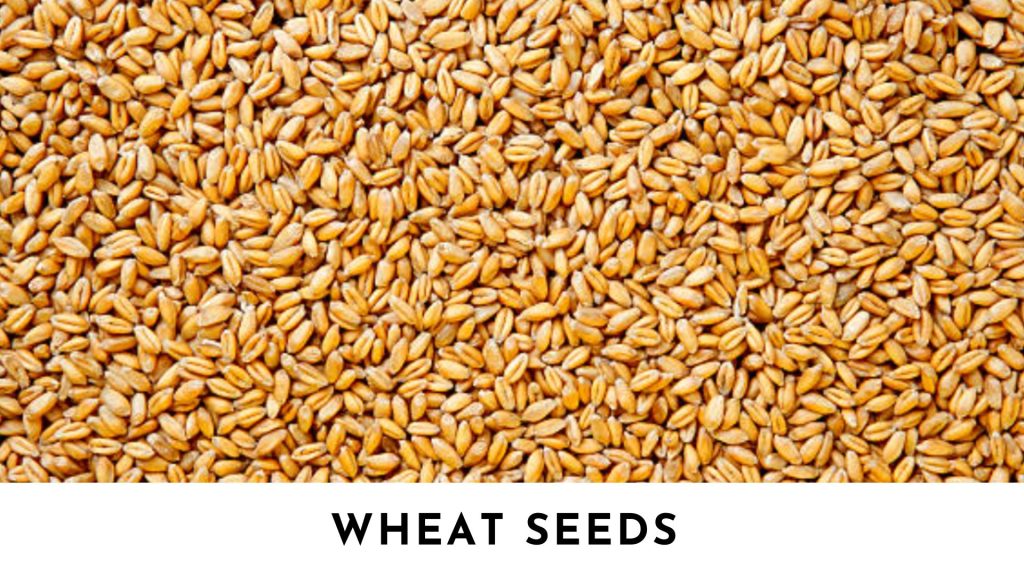
Wheat is undeniably one of the most vital grains in the American diet, deeply ingrained in the nation’s culinary history and dietary landscape. This versatile cereal crop has been a staple for centuries, shaping the American culinary tradition, and plays a crucial role in the modern food industry.
Historical Significance
Wheat holds a special place in the historical fabric of the United States. It was one of the first crops cultivated by early European settlers, becoming a lifeline in the harsh, uncharted wilderness. Wheat fields, known as the “amber waves of grain,” have been a symbol of abundance, prosperity, and agricultural success in the nation. It was the crop that sustained pioneers as they ventured westward and laid the foundation for countless American recipes, notably bread, biscuits, and pies.
In the 19th century, the development of the steel plow and the expansion of railroads allowed for large-scale wheat production in the fertile prairies of the Midwest. The abundance of wheat helped feed the growing nation and contributed significantly to its economic development.
Role in the Food Industry
The food industry in the United States relies heavily on wheat. It is the primary ingredient in an extensive range of products, from the simplest of bread to the most sophisticated pastries. Wheat flour serves as the canvas upon which culinary creativity is expressed, and its applications are virtually limitless. Wheat is transformed into various products like pasta, cereal, crackers, and more, catering to diverse tastes and dietary preferences.
Wheat also plays a significant role in the production of processed foods, providing the base for a multitude of snacks, sauces, and gravies. Additionally, wheat is a primary ingredient in brewing beer and distilling spirits, contributing to the nation’s rich brewing heritage.
Culinary Applications:
Wheat’s versatility is perhaps one of its most remarkable attributes. You can use a grain mill to turn wheat into different types of flour, each suited to specific culinary applications. Here are some of the diverse ways wheat is incorporated into the American diet:
- Bread: Perhaps the most iconic use of wheat, bread comes in various forms, from soft, fluffy white bread to hearty whole grain loaves. It’s the cornerstone of countless sandwiches and a staple at the American dinner table.
- Pastries: Wheat flour forms the basis for pastries, such as pies, tarts, cakes, and cookies. The tender, flaky crust of a cherry pie or the delicate layers of a croissant owe their textures to wheat.
- Pasta: From spaghetti to macaroni, wheat is the key ingredient in the production of pasta. It’s a versatile canvas for a wide range of sauces and ingredients.
- Cereals: Breakfast cereals are often made from wheat and are a quick and convenient way to start the day.
- Tortillas: In the realm of international cuisine, wheat is used to create tortillas, the foundation of many Mexican dishes, including burritos and tacos.
- Crackers: Whether for snacking, pairing with cheese, or dipping into hummus, wheat-based crackers are a popular choice.
- Couscous: This North African dish, made from wheat, has become a trendy and nutritious option for those seeking an alternative to traditional grains.
In recent years, there has been a growing interest in whole wheat and whole grain products due to their higher nutritional content. These options provide more dietary fiber, vitamins, and minerals, making them a healthier choice for those looking to incorporate wheat into a balanced diet.
In overall, wheat is an integral part of the American culinary landscape. Its historical significance, widespread use in the food industry, and diverse culinary applications make it a true “breadbasket” for the nation. As consumers continue to seek a balance between tradition and health, the role of wheat in the American diet remains as significant as ever.
2. Corn (Maize): America’s Crop of Plenty
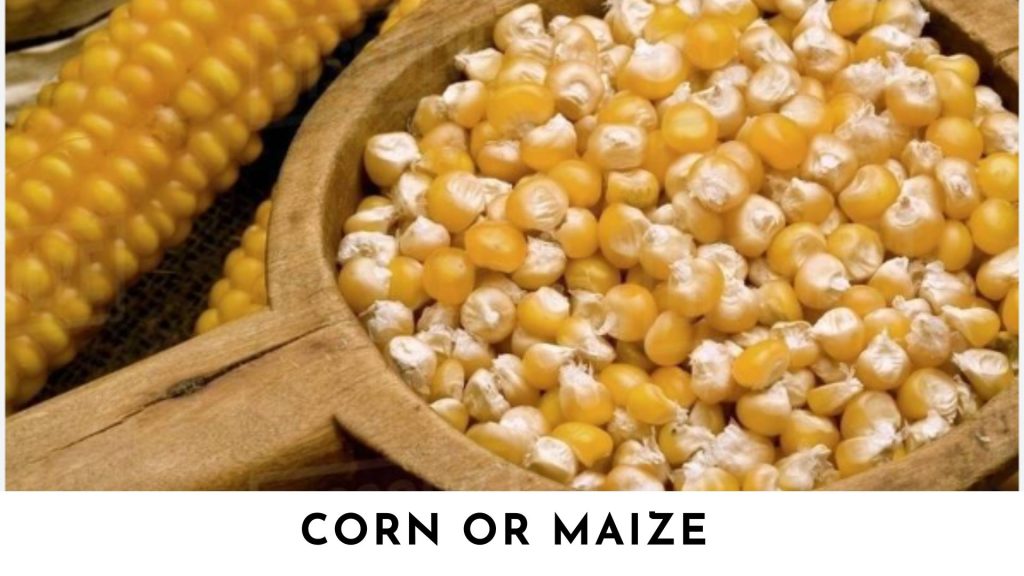
Corn, also known as maize, stands as one of the most iconic and widely grown crops in the United States. With a rich history, a diverse range of culinary applications, and a vital role in the food industry, corn has earned its reputation as “America’s Crop of Plenty.”
Historical Significance
Corn is a crop with deep roots in the history of the Americas. It was domesticated by indigenous peoples thousands of years ago, becoming a dietary staple and the backbone of many Native American civilizations. European settlers quickly adopted corn as a vital source of sustenance, leading to its proliferation throughout North America.
Corn also played a crucial role in the colonization of the continent. European settlers, unfamiliar with indigenous agricultural practices, learned to cultivate and harvest this versatile crop from Native American communities, which ultimately contributed to their survival.
Traditional Dishes
Corn’s versatility shines in traditional American dishes. Two notable examples are cornbread and grits:
- Cornbread: Cornbread is a classic Southern delicacy, a staple at the dinner table. Made from cornmeal, it can be baked in various forms, from simple, dense loaves to lighter, sweetened versions. Cornbread can be enjoyed as a side dish, a breakfast treat, or even as part of a stuffing for poultry.
- Grits: Grits are a beloved dish in the American South, particularly in states like Georgia and South Carolina. Made from ground corn, grits are often served as a creamy, savory side dish, and they can accompany dishes like shrimp and grits for a hearty and flavorful meal.
Food Industry
Corn’s role in the food industry extends well beyond these traditional dishes. One of the most significant contributions of corn to the modern American diet is the production of corn syrup. Corn syrup is used as a sweetener in various processed foods and beverages, serving as a cost-effective alternative to sugar. High fructose corn syrup, a type of corn syrup, is widely used in the production of soft drinks, candies, and a multitude of other products.
Moreover, corn is a primary ingredient in various corn-based snacks, such as popcorn and corn chips. Popcorn, in particular, has a special place in American culture, as it is a beloved movie theater treat and a popular snack for home consumption.
Corn is also a source of corn oil, which is commonly used in cooking and baking due to its neutral flavor and high smoke point. Additionally, cornstarch, derived from the endosperm of the corn kernel, is an essential thickening agent in many recipes, including soups, sauces, and gravies.
Benefits of Corn
Corn is not only a versatile ingredient but also a valuable source of nutrients. It provides essential vitamins and minerals, such as vitamin C, vitamin B6, and potassium. Additionally, corn is rich in dietary fiber, aiding in digestive health, and it offers a good source of energy from its carbohydrates.
In overall, corn, or maize, is an integral part of American agriculture and cuisine. Its rich history, diverse culinary applications, and significance in the food industry have solidified its place in the heart of American culture and cuisine. Whether in the form of traditional dishes like cornbread and grits or as an ingredient in processed foods and sweeteners, corn remains a symbol of plenty and a cornerstone of American food culture.
3. Rice: A World on a Grain of Rice
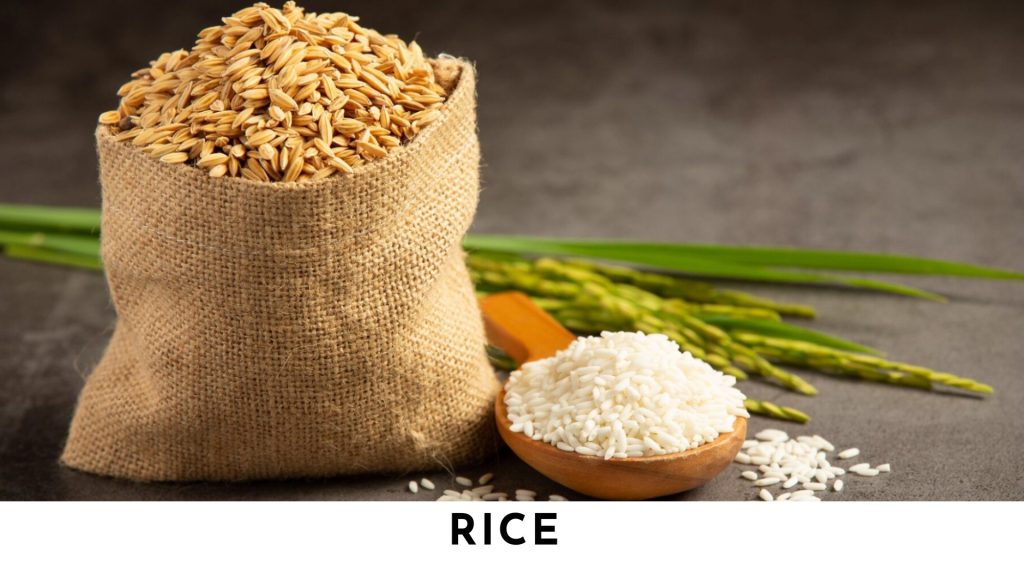
Rice is a versatile and globally significant grain with a rich history in the United States. Although it is primarily associated with Asian cuisine, rice has made its mark in American diets as well. Let’s explore the history of rice cultivation in the United States, its diverse culinary applications in dishes like jambalaya and rice pudding, and its essential role in multicultural American meals.
Historical Significance
Rice has a complex and intriguing history in the United States. Its cultivation began in the early 17th century when African slaves brought knowledge of rice farming to the South Carolina Lowcountry. These enslaved Africans, who originated from rice-growing regions in West Africa, played a crucial role in developing the rice industry in the Southern United States. As a result, rice became a key cash crop and an essential part of the region’s cultural and culinary identity.
Culinary Applications
Rice’s adaptability is one of its most outstanding features, allowing it to be used in a wide array of dishes. Here are a few notable examples:
- Jambalaya: A popular Creole and Cajun dish, jambalaya features rice cooked with a variety of ingredients, such as sausage, seafood, and vegetables. The unique blend of spices and flavors gives jambalaya a distinct taste that is loved across the American South.
- Rice and Beans: This combination of rice and beans is a cornerstone of Latin American and Caribbean cuisine. It’s a nutritious and satisfying meal, often paired with various proteins and seasoned with spices or herbs.
- Rice Pudding: A delightful dessert that can be traced back to European and Middle Eastern traditions. Rice pudding is a creamy, sweet dish often flavored with ingredients like cinnamon, vanilla, and raisins.
- Stir-Fries: Rice is an integral component of various stir-fry dishes, where it provides a neutral, comforting base for an array of vegetables, proteins, and sauces.
- Sushi: Rice is the foundation of sushi, where it is seasoned with vinegar, sugar, and salt and then combined with fresh seafood, vegetables, and seaweed. Sushi has gained immense popularity in the United States.
- Biryani: A flavorful and aromatic rice dish with roots in Indian and South Asian cuisine. Biryani incorporates a blend of spices, meat, and vegetables, resulting in a fragrant and flavorful meal.
Multicultural American Meals
The United States is a diverse and multicultural country, and rice plays a significant role in many ethnic cuisines. It is an essential component of dishes in Mexican, Chinese, Thai, Indian, and other international restaurants. As American society becomes more interconnected and inclusive, rice continues to be a unifying element on multicultural dining tables.
Benefits of Rice
Rice is an important source of carbohydrates, providing a quick and efficient source of energy. Depending on the type of rice, it can be an excellent source of vitamins and minerals, such as B vitamins, iron, and magnesium. Additionally, rice is naturally gluten-free, making it a safe and popular option for individuals with gluten sensitivities or celiac disease.
In conclusion, rice has found its place in the American culinary landscape, offering a rich history, diverse culinary applications, and a key role in multicultural meals. Its ability to adapt to a wide range of flavors and ingredients makes it a valuable and beloved component of American cuisine, showcasing the nation’s culinary diversity and history.
4. Oats: The Breakfast of Champions
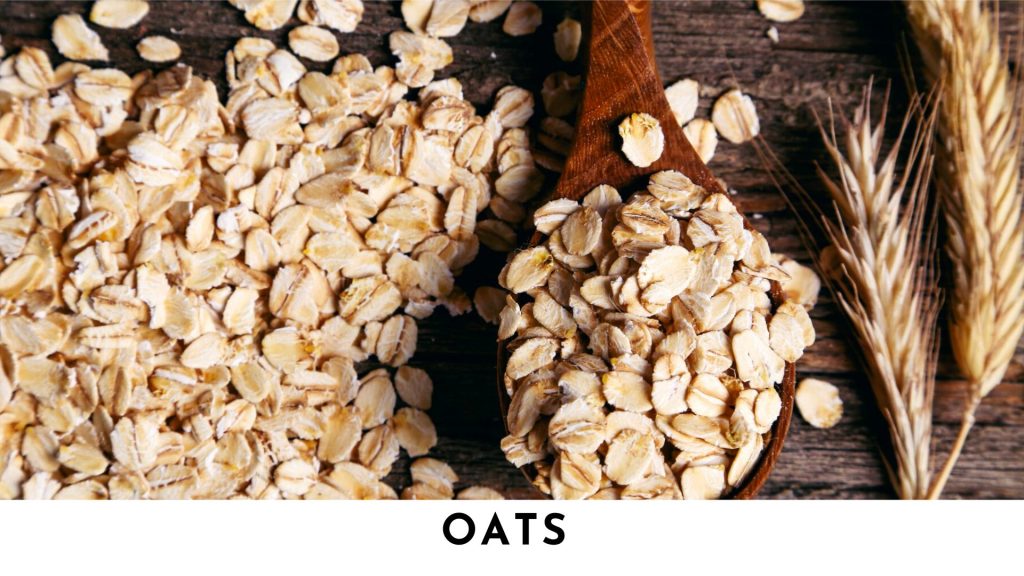
Oats hold a cherished place on the American breakfast table, loved for their versatility, heartiness, and undeniable nutritional benefits. This wholesome grain has a rich history of cultivation, boasts a range of health advantages, and plays a vital role in American baking, from oatmeal cookies to granola.
Historical Significance
Oats have been cultivated for centuries and have played a crucial role in many cultures around the world. In the United States, oats became a staple crop during the 19th century. They were valued for their resilience in colder climates and their adaptability to different soil types. Oat production in the U.S. expanded rapidly, eventually making the nation one of the largest producers of oats globally.
Nutritional Benefits
Oats are renowned for their nutritional value, making them a popular choice for a healthy breakfast. Some of the benefits of oats include:
- Fiber: Oats are rich in dietary fiber, particularly beta-glucan, which has been linked to numerous health benefits, including reduced cholesterol levels and improved digestive health.
- Protein: Oats contain a moderate amount of protein, making them a satisfying breakfast option that helps keep hunger at bay.
- Complex Carbohydrates: The carbohydrates in oats are complex, providing a steady release of energy throughout the morning.
- Vitamins and Minerals: Oats are a good source of essential vitamins and minerals, including manganese, phosphorus, and B vitamins.
- Antioxidants: Oats contain antioxidants that have been associated with reduced inflammation and improved heart health.
Culinary Applications
Oats are incredibly versatile and feature prominently in American cuisine. Here are some of the key ways oats are used in the kitchen:
- Oatmeal: A classic breakfast option, oatmeal is made by cooking oats in water or milk. It can be customized with a variety of toppings like fruits, nuts, honey, or cinnamon.
- Oatmeal Cookies: Oats are a primary ingredient in the beloved oatmeal cookie. Their nutty flavor and chewy texture make these cookies a perennial favorite.
- Granola: Oats are a key component of granola, a popular breakfast and snack option. Combined with nuts, dried fruits, and sweeteners, granola is baked until crispy and can be enjoyed with yogurt or as a cereal.
- Oat Bread: Oats can be incorporated into bread recipes, adding a distinctive texture and flavor. Oat bread is often denser and heartier than traditional wheat bread.
- Oat Pancakes: Oat flour or rolled oats can be used to make delicious and nutritious pancakes.
- Oat Smoothies: Oats can be blended into smoothies, adding creaminess, texture, and extra nutrients to your morning blend. Oats’ adaptability and neutral flavor make them an ideal canvas for a wide range of recipes, from sweet to savory.
The Role of Oats in American Breakfast Culture
Oats are deeply entrenched in American breakfast culture. They offer a satisfying and nutritious start to the day, whether in the form of a steaming bowl of oatmeal, a crunchy granola parfait, or a warm oatmeal cookie. Their versatility in both traditional and modern recipes demonstrates their enduring appeal and nutritional significance. Oats truly earn their reputation as the “breakfast of champions.”
In overall, oats are a versatile, nutritious, and delicious grain that plays a vital role in American breakfast culture and beyond. Whether as a comforting bowl of oatmeal, a sweet treat in cookies, or a hearty base for granola, oats continue to be a source of comfort and nourishment for people of all ages.
5. Barley: From Pilgrims to Pioneers
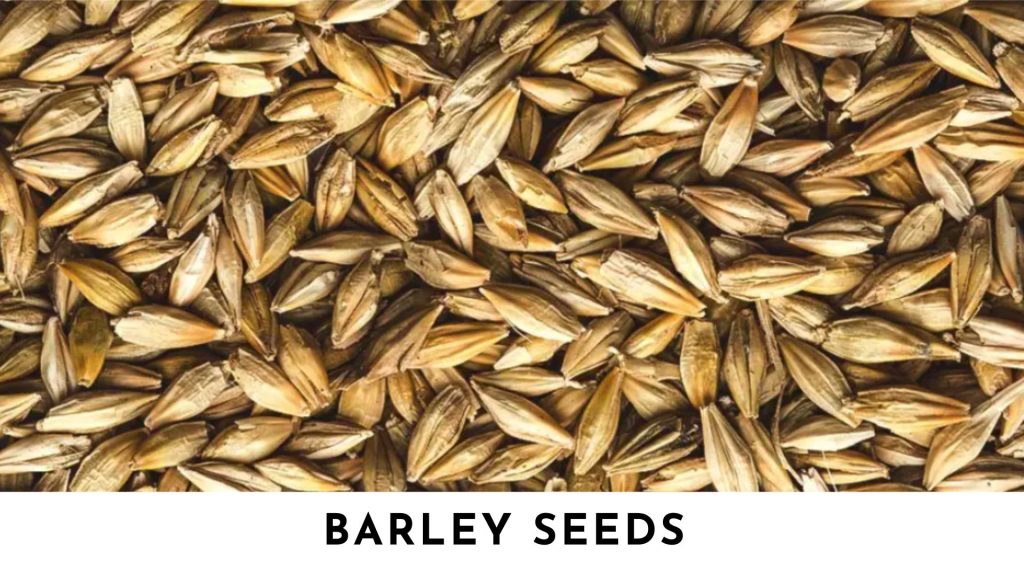
Barley is a grain with a fascinating history in America, from its early use by Pilgrims in brewing to its indispensable role in American frontier cooking. Explore the historical significance of barley, its nutritional value, and its diverse applications in modern cuisine.
Historical Significance
Barley’s history in America dates back to the earliest European settlers. When the Pilgrims arrived at Plymouth Rock in 1620, they brought barley with them, primarily for brewing purposes. Barley was used to produce beer and ale, making it a significant component of early American brewing traditions.
As America expanded westward, barley became a valuable crop on the frontier. It was a hardy and resilient grain that could withstand the harsh conditions of the American wilderness, making it a reliable source of sustenance for pioneers.
Nutritional Value
Barley is not only steeped in history but also packed with nutritional benefits. Some of the advantages of consuming barley include:
- Fiber: Barley is a rich source of dietary fiber, which aids in digestion and helps maintain a healthy gut.
- Protein: It contains a fair amount of plant-based protein, making it a valuable addition to vegetarian and vegan diets.
- Vitamins and Minerals: Barley provides essential vitamins and minerals, including B vitamins, iron, magnesium, and selenium.
- Antioxidants: Barley contains antioxidants that can help protect the body against free radicals and reduce the risk of chronic diseases.
Culinary Applications
Barley is a versatile grain with a variety of culinary uses. In modern American cuisine, it can be found in various forms, including:
- Barley Soup: Barley is often used in hearty soups, where it adds a chewy texture and nutty flavor. Beef and barley soup is a classic example.
- Barley Salad: Cooked barley makes an excellent addition to salads, adding both texture and nutrition. It can be paired with a range of vegetables and dressings for a satisfying meal.
- Barley as a Side Dish: Barley can be prepared as a side dish, much like rice or quinoa. It’s a nutritious alternative to traditional grains.
- Brewing: While barley is no longer as commonly used in home brewing as it once was, it remains a key ingredient in the production of beer, especially in craft breweries.
- Barley Flour: Barley flour can be used in baking, particularly in recipes for bread and other baked goods.
- Barley Porridge: Barley can be cooked into a creamy, comforting porridge, much like oatmeal.
- Barley Risotto: It can also be used to create a delicious, creamy barley risotto, which is a twist on the traditional Italian dish. Barley’s versatility and ability to absorb flavors make it a welcomed addition to many recipes, enhancing their texture and taste.
In overall, barley’s journey in America from the Pilgrims to pioneers showcases its historical significance and resilience as a crop. It continues to contribute to American cuisine through its nutritional value and its ability to add a delightful chewiness to soups, salads, and various dishes. Barley stands as a testament to the enduring importance of traditional grains in American culinary traditions.
6. Rye: Beyond the Rye Bread
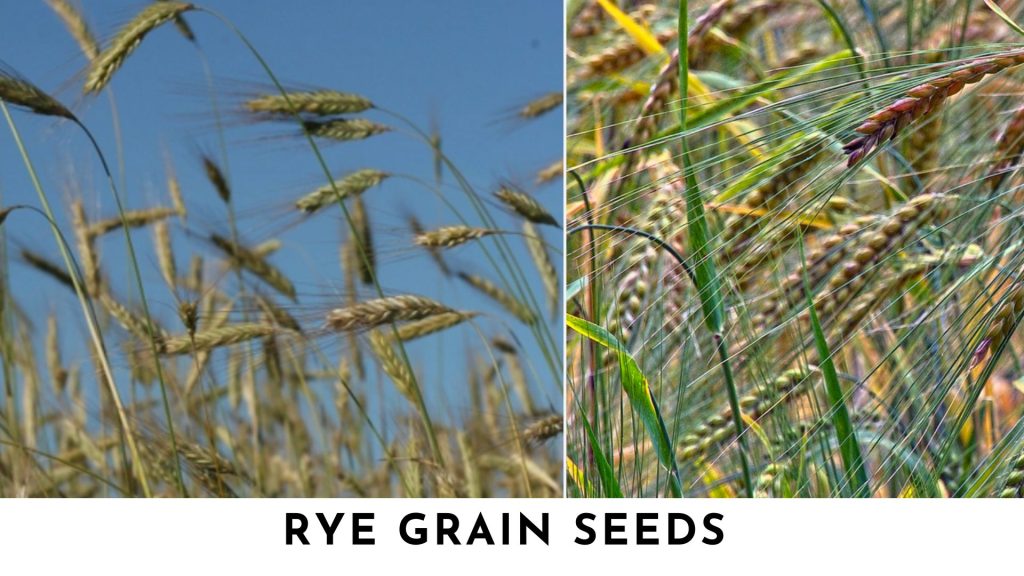
Rye is a grain with a rich history in the United States, stretching beyond its association with rye bread. This versatile cereal has found applications in cocktails and spirits and has experienced a revival in artisanal breadmaking. Let’s explore the history of rye cultivation, its unique uses in American culture, and its resurgence in modern cuisine.
Historical Significance
Rye has a long history of cultivation in the United States, dating back to the colonial era. It was introduced by European settlers, particularly those of Dutch, German, and Scandinavian descent. Rye proved to be a hardy crop that could thrive in colder climates, making it particularly well-suited for regions like the American Midwest and Northeast.
Rye was a vital food source for early American pioneers, who relied on it to make bread, porridge, and other staples. Rye whiskey also played a significant role in early American spirit production, eventually becoming a staple of the American drinking culture.
Culinary Applications
Beyond its association with rye bread, rye has diverse culinary applications:
- Rye Whiskey: Rye whiskey was a prominent spirit in early American history. While it declined in popularity during the 20th century, there has been a resurgence of interest in rye whiskey in recent years, with craft distilleries producing high-quality rye spirits.
- Cocktails: Rye whiskey is a key ingredient in classic cocktails like the Manhattan and the Old Fashioned, known for its spicy and robust flavor profile that complements other cocktail components.
- Artisanal Breadmaking: Rye is experiencing a renaissance in artisanal breadmaking. Rye bread offers a distinctive, hearty flavor and chewy texture. It’s often used in traditional bread recipes, such as pumpernickel and sourdough rye.
- Cooking: Rye grains can be used in cooking, particularly in recipes like pilafs, stuffings, and grain salads.
Benefits of Rye
Rye offers various nutritional benefits:
- Fiber: Rye is an excellent source of dietary fiber, aiding in digestion and supporting heart health.
- Whole Grains: Whole-grain rye contains essential nutrients, including B vitamins, iron, and magnesium.
- Low Glycemic Index: Rye has a lower glycemic index compared to some other grains, which can help regulate blood sugar levels.
- Protein: It contains a moderate amount of protein, contributing to a balanced diet.
- Minerals: Rye provides essential minerals such as manganese, phosphorus, and selenium.
The nutritional profile of rye, combined with its unique flavor, has contributed to its resurgence in American culinary circles.
Rye’s Revival in Artisanal Cuisine
Rye has experienced a revival in artisanal cuisine, particularly in the world of craft baking. Artisan bakers appreciate rye’s ability to add complexity, texture, and a distinct earthy flavor to bread. The resurgence of rye bread reflects a broader cultural shift towards traditional and locally sourced foods.
In overall, rye’s history in the United States goes beyond the well-known rye bread, encompassing its applications in spirits, cocktails, and a resurgence in artisanal breadmaking. With its rich flavor and nutritional benefits, rye continues to be a versatile and valuable ingredient in the American culinary landscape, preserving its historical significance while adapting to modern tastes and trends.
7. Sorghum: A Southern Sweetness

Sorghum syrup, a delectable and uniquely Southern delight, holds a special place in American culinary heritage. This sweet syrup has a rich history in the United States, boasts a wide range of culinary applications, and plays a significant role in the country’s food culture. Let’s delve into the history of sorghum production, its versatile uses in American cuisine, and its enduring significance in the Southern culinary tradition.
Historical Significance
Sorghum syrup, often referred to as “sorghum molasses,” has deep roots in American history, particularly in the American South. Sorghum is a drought-tolerant cereal grain that was originally brought to the United States from Africa. Its ability to thrive in diverse climates made it a valuable crop for both sustenance and commerce.
Sorghum was cultivated by early European settlers and quickly became a staple in the Southern United States. During the 19th century, it became a primary source of sweetener for the region, as it was more readily available than sugar. The syrup was produced through a labor-intensive process of extracting the juice from the sorghum stalks and then cooking it down into a sweet, thick syrup. It was often used as a topping for biscuits and cornbread or mixed with butter for a sweet spread.
Culinary Uses
Sorghum syrup is a versatile ingredient that has found a place in various American dishes and treats:
- Biscuits and Cornbread: One of the classic uses of sorghum syrup is as a sweet topping for biscuits and cornbread, creating a harmonious blend of flavors between the sweet syrup and the savory bread.
- Pancakes and Waffles: Sorghum syrup is a delightful alternative to maple syrup, with a unique flavor that adds a touch of Southern sweetness to breakfast favorites.
- Desserts: It is also used as an ingredient in desserts like sorghum pies, cookies, and cakes, imparting a distinctive caramel-like flavor.
- Glaze for Meat: In Southern barbecue traditions, sorghum syrup is used as a glaze for grilled or smoked meats, adding a sweet and tangy dimension to the flavor profile.
- Cocktails: Bartenders and mixologists have also embraced sorghum syrup as a cocktail ingredient, using it to add depth and complexity to various libations.
Benefits of Sorghum
Sorghum offers several nutritional benefits:
- Gluten-Free: Sorghum is naturally gluten-free, making it a suitable option for individuals with gluten sensitivities or celiac disease.
- Rich in Antioxidants: It contains antioxidants that can help protect cells and support overall health.
- Dietary Fiber: Sorghum is a good source of dietary fiber, aiding in digestion and promoting heart health.
- Minerals: It provides essential minerals such as iron, magnesium, and phosphorus.
- Low Glycemic Index: Sorghum has a lower glycemic index compared to some other grains, which can help regulate blood sugar levels.
In modern American cuisine, sorghum continues to be cherished for its unique and delightful flavor, as well as its role in contributing to a diverse and inclusive food culture.
Significance in Southern Culinary Tradition
Sorghum syrup remains an integral part of the Southern culinary tradition, representing a connection to the region’s history and the importance of resourcefulness in early American cooking. Its distinct sweetness and versatility in recipes are a testament to the enduring legacy of this uniquely Southern delight.
In overall, sorghum syrup is more than just a sweetener; it’s a symbol of American culinary heritage, especially in the South. Its historical significance, versatile culinary applications, and nutritional benefits make it a cherished and enduring component of American food culture.
8. Millet: A Tiny Grain with Mighty Potential
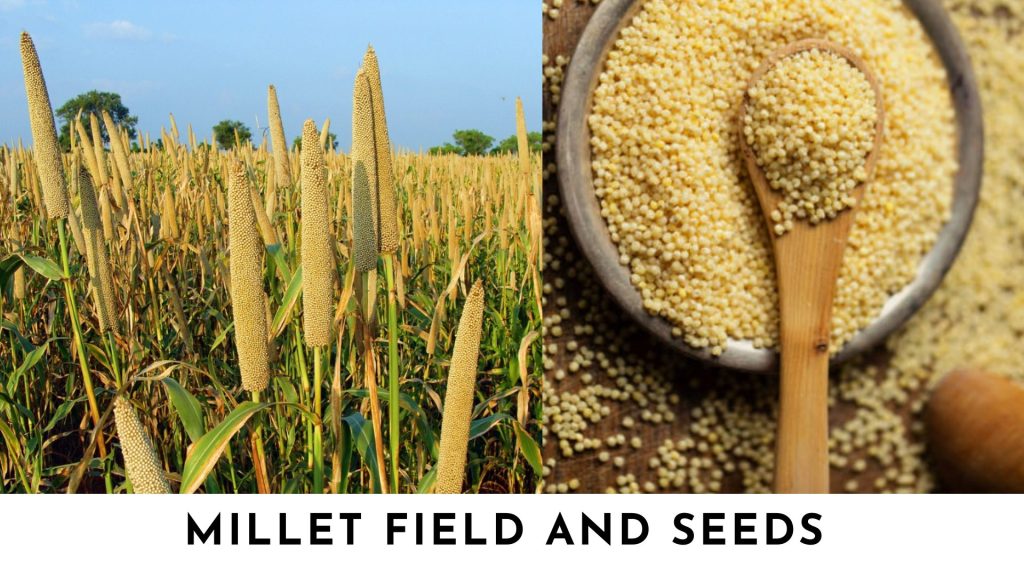
Millet, often overshadowed by more well-known grains, is a versatile and nutrient-dense cereal that plays a crucial role in various American cuisines, especially as a gluten-free alternative. In this exploration, we will delve into the history of millet, its numerous nutritional benefits, and its applications in both human dishes and as birdseed.
Historical Significance
Millet has a long history, dating back thousands of years, and is believed to have been one of the earliest cultivated grains. In the United States, it may not have the same historical prominence as wheat or corn, but it has steadily gained recognition as a valuable crop with diverse applications.
Nutritional Benefits
Millet is a powerhouse of nutrition, offering several health benefits:
- Gluten-Free: Millet is naturally gluten-free, making it an ideal choice for individuals with gluten sensitivities or celiac disease.
- High in Fiber: Millet is rich in dietary fiber, which aids digestion and helps maintain a healthy gut.
- Protein: It contains a moderate amount of protein, making it a valuable source of plant-based protein for vegetarians and vegans.
- Vitamins and Minerals: Millet provides essential vitamins and minerals, including B vitamins, iron, magnesium, and phosphorus.
- Antioxidants: Millet is a source of antioxidants, which can help protect cells and reduce inflammation.
Culinary Applications
Millet is incredibly versatile in the kitchen and can be used in a variety of dishes:
- Porridge: Cooked millet can be used as a base for sweet or savory porridge, similar to oatmeal.
- Side Dishes: Millet can be prepared as a side dish, much like rice or quinoa. It pairs well with various vegetables, herbs, and spices.
- Baking: Millet flour can be used in gluten-free baking to make bread, muffins, and other baked goods.
- Salads: Millet can be added to salads for extra texture and nutrition.
- Casseroles: It can be used in casseroles, where its mild flavor pairs well with a range of ingredients.
Birdseed
Beyond its culinary uses, millet is commonly used in birdseed mixes. It’s a favorite among many species of birds, including sparrows, doves, and finches, and is often used by backyard birdwatchers to attract and feed their feathered friends.
Millet’s small size and nutritional content make it a valuable component in birdseed blends, and its versatility in human dishes and bird feeding has made it an essential grain in various aspects of American life.
In overall, millet may be less familiar to many Americans compared to staples like wheat and corn, but its remarkable nutritional benefits, gluten-free status, and culinary versatility have earned it a respected place in American cuisine. Whether as a source of sustenance for humans or as a treat for our avian neighbors, millet is a tiny grain with mighty potential, contributing to the diversity of the American diet and ecosystem.
9. Quinoa: A Superfood on the Rise
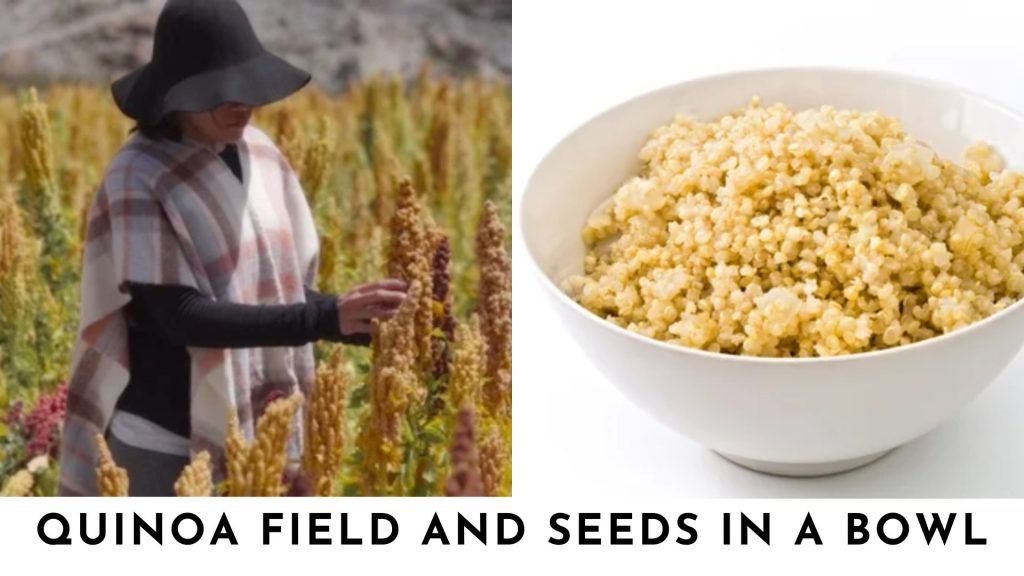
Quinoa, although not native to the United States, has rapidly gained popularity due to its exceptional nutritional value. In this exploration, we will uncover the history of quinoa, its various applications in contemporary American diets, and its significance as a gluten-free, protein-rich superfood.
Historical Significance
Quinoa, a grain native to the Andes region of South America, has been cultivated for over 7,000 years. Although it’s not native to the United States, its history plays a role in the changing American diet.
Quinoa gained international attention in the late 20th century due to its outstanding nutritional profile. This led to increased production and consumption worldwide, including in the United States.
Nutritional Benefits
Quinoa is celebrated for its impressive nutritional content:
- Complete Protein: Quinoa is a complete protein, meaning it contains all nine essential amino acids, making it an excellent source of plant-based protein.
- High Fiber: It is rich in dietary fiber, which supports digestive health and helps maintain a feeling of fullness.
- Vitamins and Minerals: Quinoa provides essential vitamins and minerals, including B vitamins, magnesium, iron, and phosphorus.
- Antioxidants: Quinoa contains antioxidants, which help protect the body’s cells from damage.
- Gluten-Free: Quinoa is naturally gluten-free, making it a safe choice for those with celiac disease or gluten sensitivities.
Culinary Applications
Quinoa’s versatility in the kitchen has led to its widespread use in contemporary American diets:
- Salads: Quinoa is commonly used as a base for salads, adding a protein boost and a delightful nutty flavor.
- Side Dishes: It can be prepared as a side dish, much like rice or couscous, and seasoned with a variety of herbs and spices.
- Protein Substitute: Due to its protein content, quinoa is often used as a substitute for grains in vegetarian and vegan dishes, like quinoa-based burgers and patties.
- Breakfast Cereals: Quinoa can be turned into a nourishing breakfast cereal when cooked with milk and topped with fruits and nuts.
- Baking: Quinoa flour is used in gluten-free baking, contributing to the production of bread, muffins, and other baked goods.
Gluten-Free and Protein-Rich
Quinoa’s remarkable nutritional profile, combined with its gluten-free status, has made it a valuable addition to the American diet. As more people seek alternatives to traditional grains and look to incorporate plant-based protein sources into their meals, quinoa has risen to prominence.
In overall, quinoa may not be native to the United States, but it has become a significant and respected addition to the American diet. Its impressive nutritional content, including complete protein and high fiber, makes it a sought-after superfood, with diverse applications in contemporary American cuisine. As quinoa’s popularity continues to rise, it reflects the evolving dietary preferences of a health-conscious and diverse American population.
10. Farro: An Ancient Grain Reimagined
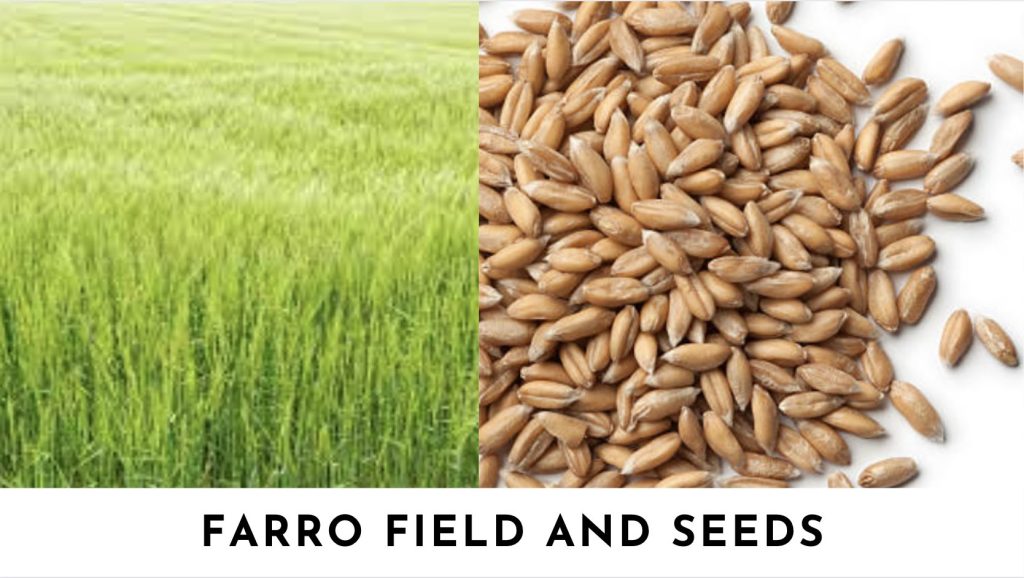
Farro, an ancient grain with a storied history, is experiencing a resurgence in American cuisine, especially in the realm of healthy eating. In this exploration, we will uncover the history of farro, its modern culinary applications, and its contribution to the creation of nutritious and flavorful American dishes.
Historical Significance
Farro has been cultivated for thousands of years and was a staple in the diets of ancient civilizations, particularly in the Mediterranean region. Its history is intertwined with that of ancient Rome, where it was a primary food source for soldiers, laborers, and the general population.
Though farro has been a fundamental grain in various parts of the world for centuries, it has recently gained popularity in the United States as part of the movement towards incorporating more ancient grains into contemporary diets.
Nutritional Benefits
Farro is celebrated for its remarkable nutritional benefits:
- Rich in Fiber: Farro is high in dietary fiber, which supports digestion and helps maintain a feeling of fullness.
- Protein Source: It contains a moderate amount of protein, providing a valuable source of plant-based protein for vegetarians and vegans.
- Complex Carbohydrates: The complex carbohydrates in farro release energy slowly, helping to sustain energy levels throughout the day.
- Vitamins and Minerals: Farro offers essential vitamins and minerals, including B vitamins, magnesium, and iron.
- Antioxidants: It contains antioxidants, which can help protect cells from damage caused by free radicals.
Culinary Applications
Farro’s versatility in the kitchen has contributed to its resurgence in American cuisine:
- Salads: Farro is commonly used in salads, contributing a hearty and chewy texture that pairs well with a variety of vegetables and dressings.
- Soups: It can be added to soups to create a satisfying and nutritious component, enhancing the texture and flavor of the dish.
- Side Dishes: Farro can be cooked and seasoned as a side dish, much like rice or quinoa, and is often used as a bed for other proteins or vegetables.
- Baking: Farro flour can be used in baking, including the production of bread, muffins, and other baked goods.
- Breakfast: Farro can be enjoyed as a hot cereal for breakfast, served with milk and sweetened with honey or fruit.
Farro’s adaptability and nutty flavor have made it a desirable grain for chefs and home cooks alike, offering a unique and wholesome addition to a wide range of recipes.
Contribution to Healthy Eating
Farro’s resurgence in American cuisine aligns with a growing interest in whole grains and healthier eating. As consumers seek nutrient-dense, unprocessed foods, farro has gained recognition as a valuable and versatile option that contributes to the creation of nutritious and flavorful dishes. Its inclusion in modern American cooking represents a shift towards a more health-conscious and diverse culinary landscape.
In overall, farro, an ancient grain reimagined, is taking its place in the modern American diet as a symbol of healthy, flavorful eating. Its rich history, remarkable nutritional content, and culinary versatility make it an asset to contemporary American cuisine. As farro continues to gain popularity, it contributes to a diverse and health-conscious food culture in the United States.
Conclusion
Grains are the threads that weave together a rich tapestry of flavors, history, and culture in American cuisine. The top 10 grains above not merely dietary staples; they embody the nation’s agricultural heritage and culinary diversity. From wheat to quinoa, these grains have played pivotal roles in shaping what Americans eat, how they cook, and their national identity. They not only nourish bodies but also feed the collective soul, connecting us to our roots and the traditions that have shaped our tastes. They represent the enduring spirit of America’s agricultural traditions, the culinary innovations reflecting its diversity, and the shared experiences that bring families, communities, and cultures together around a meal.
3 thoughts on “America’s Grain Basket: The Top 10 Grains Consumed in the USA”